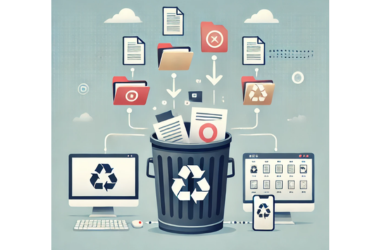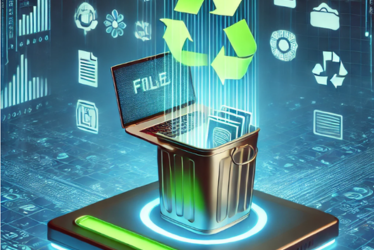Anúncios
Learn practical strategies to rescue those images you thought were lost forever
If you’ve ever accidentally deleted a photo, formatted your memory card, or lost important images from your phone or computer, know this: not all is lost.
The good news is that there are several possible ways to recover those images — and yes, often with complete success!
In this article, we’ll explore practical tips, tested strategies, and powerful tools that can help you recover your photos right now. Get ready to turn panic into relief!
📌 Why “deleted” photos can still be recovered
First of all, it’s important to understand a technical detail that works in your favor: when you delete a photo, it doesn’t immediately disappear from the device.
What actually happens is that the space where it was stored is marked as “free” to be overwritten. This means that as long as that space hasn’t been used by another file, the image can still be recovered.
That’s why the most important thing is to act quickly! The sooner you start the recovery process, the higher the chances of success.
🛠️ Tools to help you recover deleted photos
Let’s get straight to the point. There are programs — both free and paid — that can scan your hard drive, memory card, or phone to retrieve these images. Below are the main tools available and how to use them:
1. Recuva (Windows)
Best for: Computers, external hard drives, SD cards, and USB drives.
- Free and easy to use.
- Offers deep scanning to find even hard-to-recover files.
- Just install it, choose the “Pictures” option, and select where to search.
Tip: Run the normal scan first. If it doesn’t find anything, try the “deep scan.”
2. PhotoRec (Windows, macOS, and Linux)
Best for: Advanced users or technicians.
- Open source (free).
- Very efficient, but with a less user-friendly interface.
- Works even on formatted devices.
Note: It comes bundled with TestDisk. You need to unzip the file and run “photorec.”
3. Disk Drill (Windows and macOS)
Best for: Users who need to recover photos from hard drives, USBs, SSDs, or even iPhones.
- Modern interface.
- Allows you to preview images before recovering.
- Free version has a recovery limit (usually up to 500 MB on Windows).
4. Dr.Fone (Android and iOS)
Best for: Recovering lost photos directly from your phone.
- Runs on your computer, but connects to your phone to scan it.
- Supports photo recovery, including deleted WhatsApp images.
- Requires root access on some Android devices to reach deeper data.
📲 How to recover photos from Google Photos, iCloud, and other cloud services
Not everything has to be done with technical programs. If you use services like Google Photos or iCloud, there’s a high chance your photos are still saved — even if they appear to be deleted.
Google Photos
- Go to photos.google.com.
- Access the Trash folder.
- Check if the photo is there.
- Photos stay in trash for 30 days before being permanently deleted.
- Click Restore to return them to your gallery.
iCloud
- Visit icloud.com and log in with your Apple ID.
- Go to Photos > Recently Deleted.
- Select and click Recover.
- The restoration period is also 30 days after deletion.
Attention: Even if you deleted it from your iPhone, the image might still be in iCloud if sync was active.
💡 Strategies for specific situations
Each photo loss case may require a different approach. Below are effective strategies for various scenarios:
💾 1. Corrupted or formatted memory card
- Stop using the card immediately.
- Use tools like Recuva or PhotoRec right away.
- If possible, create a full image backup of the card using the “dd” command (Linux) or programs like USB Image Tool (Windows).
🗑️ 2. Photos deleted from the computer’s recycle bin
- Use a recovery program like Recuva or EaseUS Data Recovery.
- Avoid installing the program on the same drive where the lost files were located.
- The less you use the computer before recovery, the better.
🔁 3. Photos deleted from apps (WhatsApp, Instagram, etc.)
- WhatsApp usually saves copies of images in the WhatsApp/Media/WhatsApp Images folder.
- Apps like DiskDigger (Android) can scan your phone’s memory.
- In many cases, even without root, it’s possible to recover temporary images.
📱 4. Images lost during phone change
- Check if you enabled automatic backup in Google Photos, iCloud, Dropbox, or OneDrive.
- Log in to your old account on the new device to sync.
- Use the “restore backup” option when setting up the new phone (available on Android and iPhone).
🧠 Tips to avoid future photo loss
After going through the stress of recovering your photos, it’s time to protect yourself. After all, the best recovery is prevention! Check out these good practices:
- Enable automatic backup on your phone (Google Photos, iCloud, Dropbox).
- Manually back up your important files regularly on your computer.
- Use two storage locations: like an external hard drive + cloud service.
- Avoid using the same SD card for too long. They have a limited lifespan.
- Avoid “cut and paste” — it’s safer to copy and delete afterward.
🤔 Frequently asked questions about photo recovery
❓Can I recover photos from a broken phone?
Yes, as long as the device still powers on or the internal storage is intact. You can:
- Connect it to a computer via USB.
- Use tools like Dr.Fone.
- If the device is unusable, take it to a professional technician to access the storage.
❓Can I recover photos deleted more than 30 days ago?
It depends. If they haven’t been overwritten, it’s possible. Tools like PhotoRec work best in this scenario. But the more time has passed, the lower the chances.
❓I recovered the photos, but they’re corrupted. What now?
Some tools try to fix corrupted files:
- Stellar Repair for Photo
- JPEG Repair Toolkit
- PixRecovery
These programs can partially or fully restore damaged images, depending on the level of corruption.
🧭 Conclusion: Your memories could be just a click away
Losing a photo hurts. It’s more than just deleting pixels — it’s erasing moments, memories, and stories. But now that you know yes, it’s possible to recover deleted photos, there’s hope again.
The key is to act fast, choose the right tool for your case, and avoid writing new files on the same location. With the practical tips you’ve just read, the odds are in your favor.
Did you like these tips? Have you ever recovered a photo using any of these tools?
Leave a comment below sharing your experience — and of course, share this article with anyone who needs to save their memories too!
🔔 Oh! And don’t forget to subscribe to our channel to receive more tutorials like this one. Your photos, your time, and your peace of mind will thank you!



